Boseong Green Tea Fields: How To Get There & What To See
Did you know the green tea terraces of Boseong are green year round? I just found out and I think that is awesome because while it can be a rather popular place to visit in the spring and the summer, maybe more people should go in the autumn and winter instead. The Boseong green tea fields, as they’re often called, will still be quite gorgeous… which I can say from experience as I’ve just been there, whenver you want to visit Jeollanam-do.
Looking for a beautiful escape this winter in Korea? Or maybe you are looking for things to do in Jeollanamdo. Whether you’re a tea lover, nature lover, or just looking to get away in Korea, you definitely need to see the Boseong green tea terraces. Spring, summer, autumn, or winter, this is a must do in South Korea.

Plan your trip to the Boseong Green Tea Fields:
- Basic Information
- How To Get To Boseong
- Where To Stay In Boseong
- What To Know About Boseong
- When To Visit the Boseong Green Tea Terraces
- Daehan Dawon Tea Plantation (대한다원)
- What To See Nearby
- What To Know About Korean Green Tea
(This post contains affiliate links, which means I receive a certain percentage of a sale if you purchase after clicking at no cost to you. Thank you for your support.)
Basic Information
Admission: Adults: W4,000; Children: W3,000
Hours: March – October: 9:00am ~ 6:00pm; November ~ February: 9:00am ~ 5:00pm
Days: Open all year round.
Website: http://dhdawon.com/
How To Get To Boseong
Address: 763-65 Nokcha-ro, Boseong-eup, Boseong-gun, Jeollanam-do (전라남도 보성군 보성읍 녹차로 763-65) (<– This is the address for the Daehan Dawon Tea Plantation (대한다원), the biggest and dare I say most beautiful green tea plantation in the area.)
On A Tour: There are great tour options that head down to Boseong or Yeosu and include a stop at Boseong. We headed down there with www.hanatour.com for our most recent trip and it was great.
By Plane: A great way to get to Boseong that a lot of people overlook is to fly to the southern region and then rent a car or take a bus from the airports. You can head to either Gwangju Airport or Yeosu Airport. The flight takes an hour and then from those stations, rent a car and enjoy a little road trip. From either airport, it’s about an hour to Boseong.
By Train: The only direct train is a slow one, the fastest option would be to take the KTX to Gwangju Train Station which takes an hour and a half. From there, you’d have to transfer to the slow train but from Gwangju to Boseong Train Station on the Mugunghwa Train it takes just under an hour and a half.
By Bus: There are buses that head to Boseong from Central City Terminal. They take about 5 and a half hours.
Where To Stay In Boseong
Boseong is quite regional so there aren’t a lot of places to stay near the Boseong Green Tea Fields, but there are a few if you want to try.
Golmangtae Pension
A simple but comfortable pension style accommodation just 2km from the green tea fields, Golmangtae Pension has a lovely garden and a terrace on every room has views of some more beautiful green tea fields. It’s a cute place nestled in the hillside.
You can book a room here on Booking.com
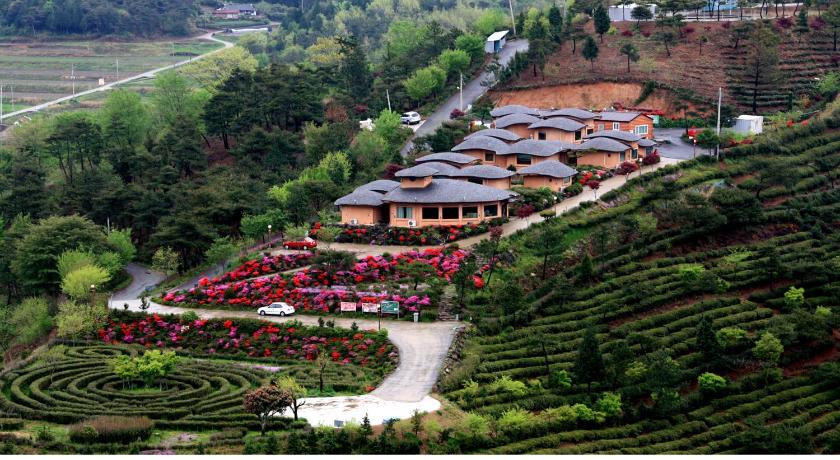

What To Know About Boseong
Boseong is one of the three regions in Korea that are best known for producing tea. There is 26.71 hectares of land dedicated to the production of green tea in Boseong so to say you’ll have your fill is understating it.
Boseong has been producing green tea since the 1600s despite falling in and out of favor throughout the years. During the Joseon Dynasty, for example, green tea fell out of favor as it was associated with Buddhism. It was back in favor by the 1930s and by the 1970s, large scale terraced farms were commonplace. This is what you can still see there today.
Boseong is one of the rainiest places in Korea which makes it ideal for growing green tea as it requires 1500mm of water annually. Known as the green tea capital of Korea, tea produced here has a distinct taste and aroma so for any tea connoisseur in Korea, you really need to see it in person.
Random Fact: Boseong Green Tea passed the strict quality inspection of the Russian Medical Biology Lab, and was officially recognized as a beverage suitable for an astronaut’s special diet.
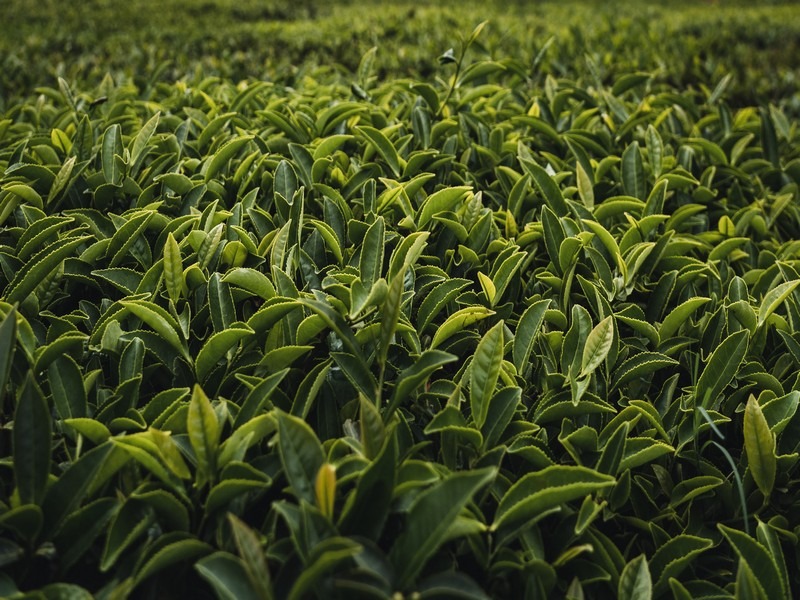
When To Visit the Boseong Green Tea Terraces
As I said in the beginning, the great thing about green tea bushes in Boseong is that they are green year round. The bushes may look a little more bare or lush depending on if they’ve just been harvested and the surrounding scenery of trees on the mountain may change accordingly, but in general, the Boseong green tea fields are open year round and green.
Boseong Green Tea Festival (보성다향대축제)
There is an annual festival that has been taking place for the past 40 years to celebrate green tea in Boseong. The festival typically takes place in May every year. If you like festivals with lots of different experiences, activities, and demonstrations, then spring in Korea might be a good time for you to go. If you’re less inclined to go when there are crowds, then avoid this time.
Boseong Tea Plantation Light Festival (보성차밭 빛축제)
Since 2000, the Boseong Green Tea Plantation has been hosting a light festival from the end of November to the beginning of January. There are lots of holiday lights and installations to see from 6:00pm until 10:00pm.
Daehan Dawon Tea Plantation (대한다원)
Founded in 1957, the Daehan Dawon Tea Plantation is one of the largest privately owned green tea plantations in Korea. This is also the largest green tea plantation in Boseong and is where you’ll want to go to see a picturesque rolling hillside of green tea bushes. As it is the most popular green tea fields in Boseong, there might be quite a few people, but just know that it is huge so there’s a lot of space to spread out.


The plantation you see today was actually developed in the 1930s when the Japanese decided to cultivate green tea here. That plantation was destroyed during the Korean War and was subsequently re-established by Chang Young Seop in 1957 which is why you’ll see some different dates and information for the area.
The beautifully lined rows of green tea bushes hug the side of the curving mountain and are extremely eye catching. This is also why I keep referring to them as green tea “terraces” as opposed to green tea “fields” because they are set on an incline going up the mountainside so they aren’t the flat green tea fields like you might see on Jeju Island.

There is more than just green tea terraces to see at the Daehan Dawon plantation. The owners have cultivated a plantation with 3 million decorative trees as well. Walk up and around the area and follow the signs to find a grove of juniper trees, cedar trees, cypress trees, ginkgo trees, chestnut trees, maple trees, camellias, and more. There’s even a bamboo forest here that is beautiful and many people don’t even see. Make sure to grab a map at the entrance to see everything that there is to see!
As you drive through Boseong, you may see other green tea farms in the area and there are plenty, but Daehan Dawon is the most large-scale green tea plantation in the country and is really breathtaking when you see it. Don’t lose your breath though… breathe in all of that green tea goodness.

What To Do at Daehan Dawon
Eat Green Tea Ice Cream
One of the must eat foods in Boseong is absolutely green tea ice cream. Get it from the main square area before you really get into the green tea terraces. We hiked up and around and ate it when we were done to cool off from the hike. But, you can always pick up the refreshing treat before you go up and try to take it with you!
It’s delicious. You can’t say you’ve been tot he Boseong Green Tea Fields unless you’ve eaten the ice cream there.

Hike To The Top For A View
It might seem a little daunting, but it’s really not. Make sure you go all the way up and then up again because there are actually TWO observatory spots. The second one will give you a view of the green tea terraces, pine tree forest, and even the ocean on clear days. That’s a spectacular and beautiful layered view.
See More Than Green Tea
There is a lot more to see than just the green tea bushes hugging the side of the mountain. Make sure you go and find the bamboo forest, groves of pine trees and Juniper trees and if you go in the spring, the cherry blossom trees. There is a lot more to see than a lot of people talk about.

What To See Nearby
Tea Museum of Korea (한국차박물관)
Just outside of the entrance to Daehan Dawon is the Tea Museum of Korea. This is a great addition to the itinerary when in the area to learn more about the history and cultivation of tea in Korea. The museum has three floors and you can learn about the basic principles of tea cultivation and production, tea ceremonies in Korea and there are beautiful tea sets on display separated by era. There is also a tea experience center here with some hands on programs as well.
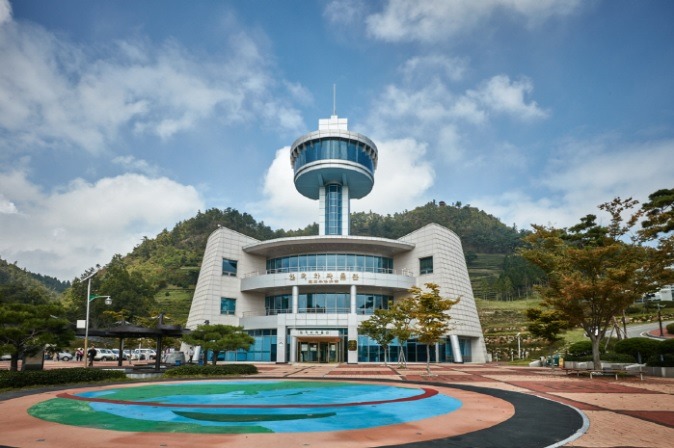
On top of all of that, if you want yet another beautiful spot with a view, take the elevator up to the fifth floor (there is no fourth floor), to the observatory and you can have another view of the surrounding green tea farms.
- Address: 775 Nokcha-ro, Boseong-eup, Boseong-gun, Jeollanam-do (전라남도 보성군 보성읍 녹차로 775)
- Hours: March – October: 10:00am ~ 6:00pm; November – February: 10:00am ~ 5:00pm
- Days: Tuesday – Sundays (Closed Mondays, January 1st, Seollal, and Chuseok)
- Admission: Adults: W1,000; Children: W500
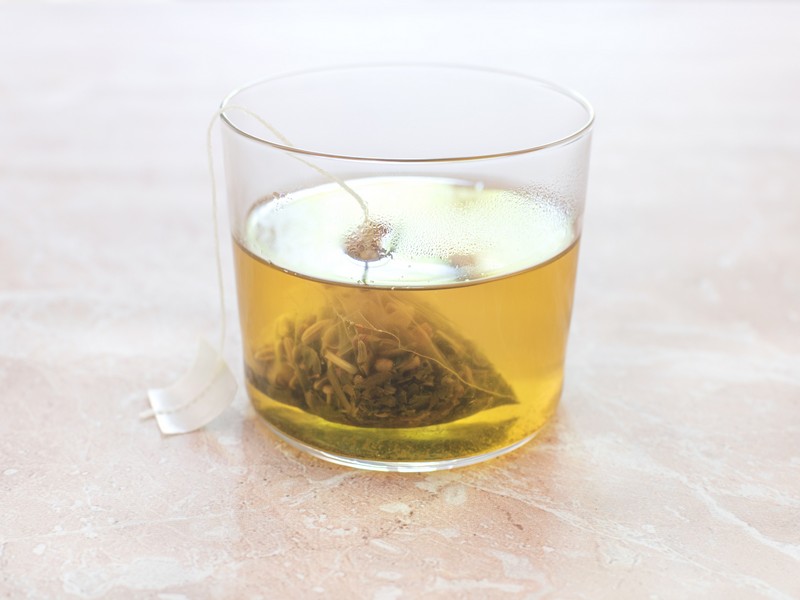
What To Know About Korean Green Tea
Korea is the 29th largest tea producer in the world and exports 3,200 tons of tea each year. There are three main areas of Korea that are well known for their tea production: Jeju Island, Boseong in Jeollanam-do, and Hadong in Gyeongsangnam-do. In South Korea, tea leaves are collected 3-4 times a year and the taste and quality of the tea depends on the time of picking.
The different kinds of tea are:
- Woojeon Tea: This tea is made from the first young leaves grown after a severe winter and are collected before April 20th, known as Gokwoo. This premium tea has a soft and fresh taste and aroma and there’s usually a very limited quantity.
- Sejak Tea: This is the most popular kind of green tea and is made from the leaves that are collected during the first part of May before the leaf is fattened fully. This kind of tea is also called Jakseol because it looks like the tongue of a bird.
- Jungjak Tea: This tea is made from the leaves collected more toward the middle part of May and offers a more generous taste.
- Daejak Tea: Also called Ipha, this tea is made from the leaves ripened more than Jungjak. Collected near the end of May, this tea has a more astringent taste.
- Yep Cha: This tea is made from the fully ripened tea leaves that are collected between June and July.
Did you like this post? Pin IT!
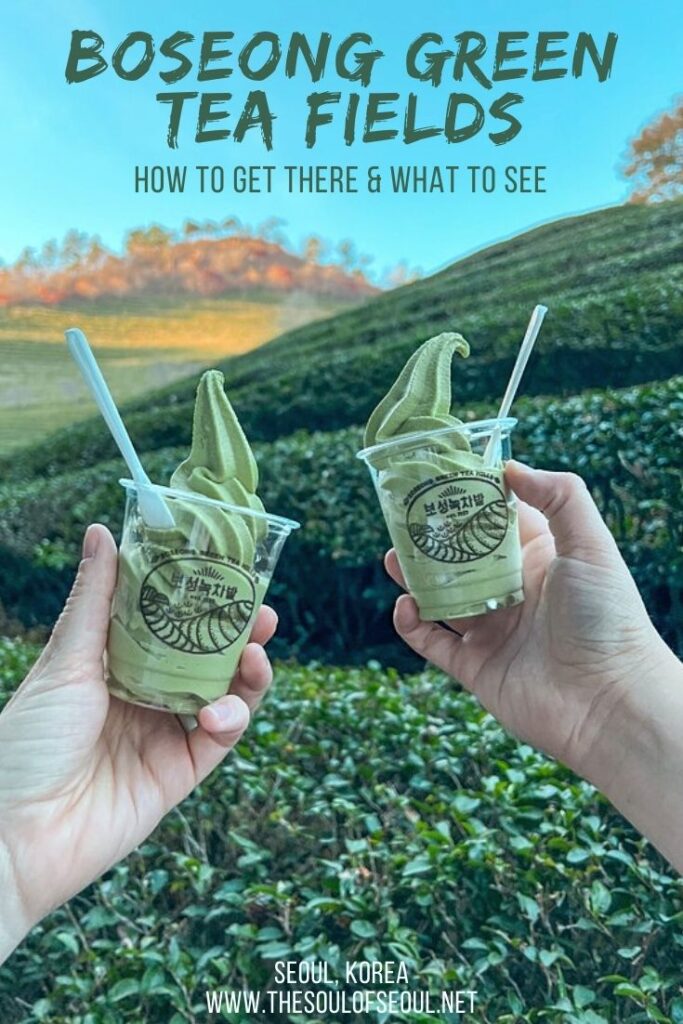
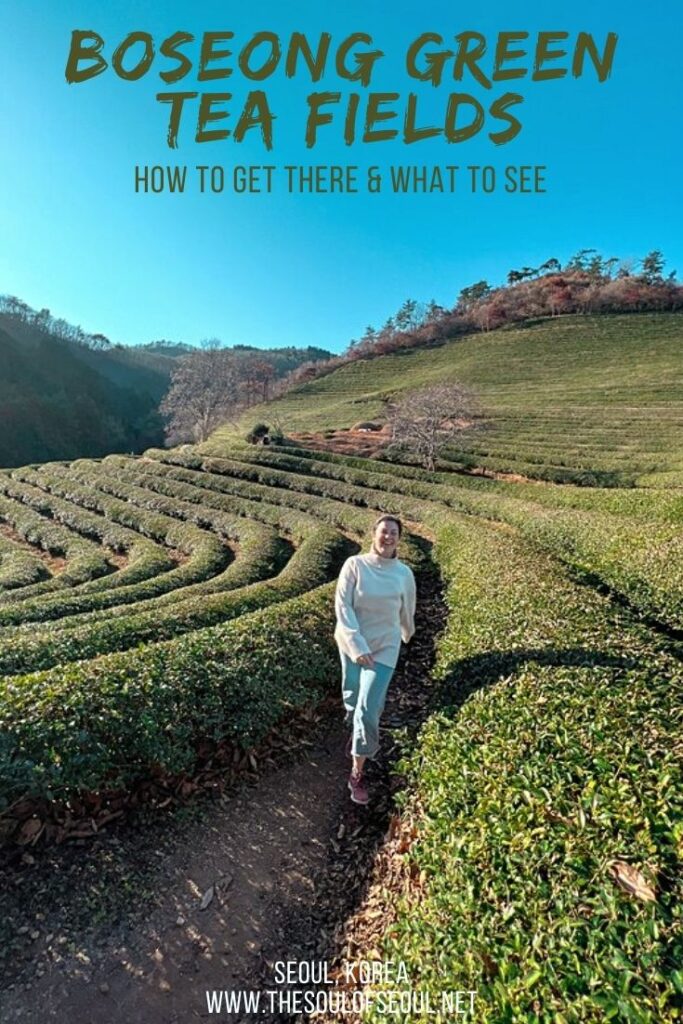
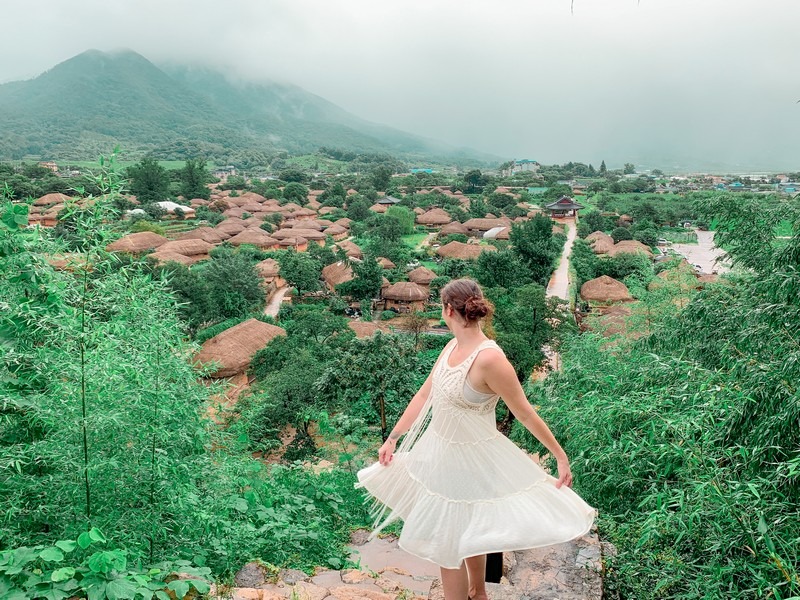
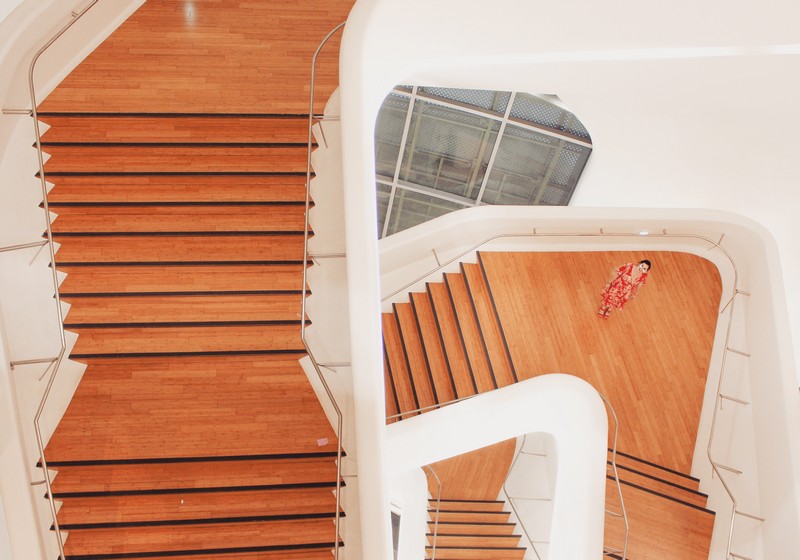
One Comment
Jinah Herr
I was hoping to get your newsletters.
Thank you!